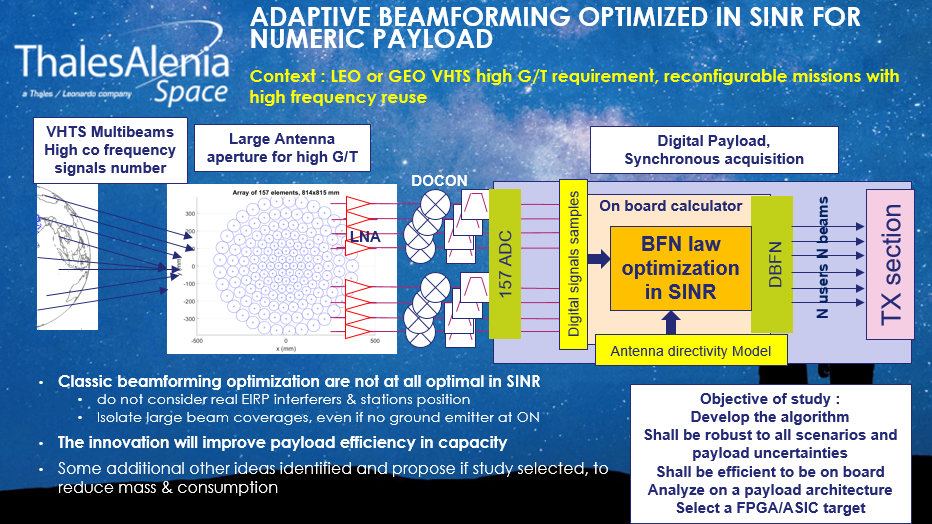Duration: 12 months
Study concerns satellite payload with phased array antenna, driven by digital reconfigurable BeamForming Network (BFN),for high capacitive Rx VHTS multispot missions with frequency reuses.
For having the best capacity, the most efficient modulation shall be chosen (maximum of bits per symbol). But has to respect a Binary Error Rate directly linked from the SINR power ratio : [ user signal power ] over [ noise power + interferers signal power ].
Currently, BFN law are optimized in directivity and C/I. This optimization, :
• Maximizes directivity on all beam coverage => maximization is not on Ground emitter (loss dB)
• For C/I, minimization of directivity over all co frequencies beams large coverages, even if no ground emitter in them => isolate unusefull areas
• Do not consider real ground station EIRP => isolate all beams at same level
For these reasons current BFN law are not at all optimum in SINR point of view. Capacity shall be improved, with a more smart BFN law optimization, propose in the study. This innovation shall be compatible with next TAS digital payload for VHTS communications,
First objectives of innovation is to develop a BFN law robust algorithm in SINR which can be embedded in a ASIC or FPGA at board,
o Directivity maximization only toward the user
o Power minimization toward all other ground stations
o To do that no frequency plan knowledge, nor demodulation,
o Main payload imperfections considered : like amplitude and phase misalignments, thermal noise, satellite instability, Doppler…
o Algorithm shall be efficient, to be embedded onboard
Second objective of the innovation study : Combination of previous SINR approach with large feeds on sparse antenna or HBFN : in order to reduce digital control. That would decrease mass and consumption
o SINR approach innovation expected to be compatible with grating lobes issues
o Some ideas has already been identified and could be developed during the study

